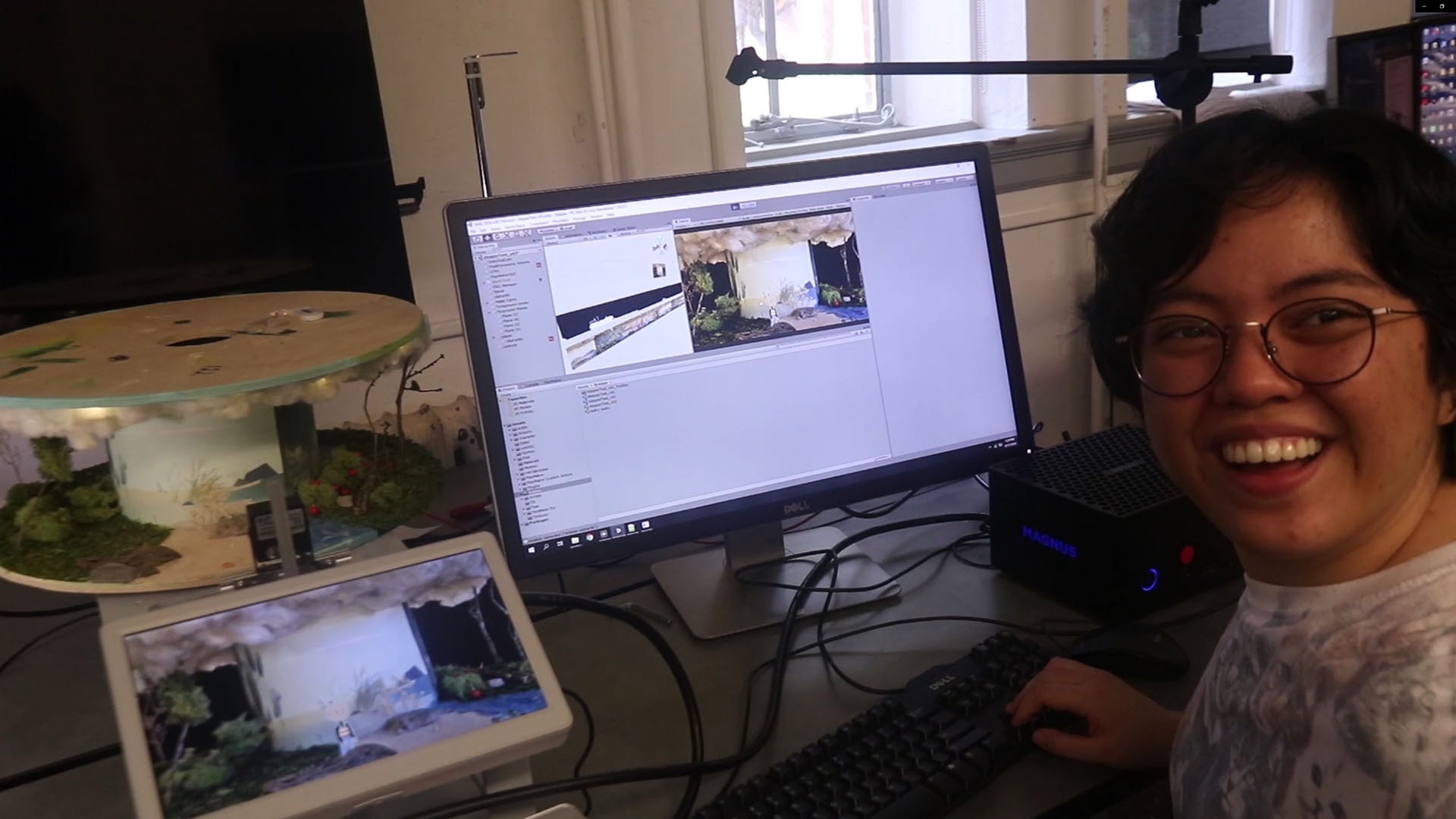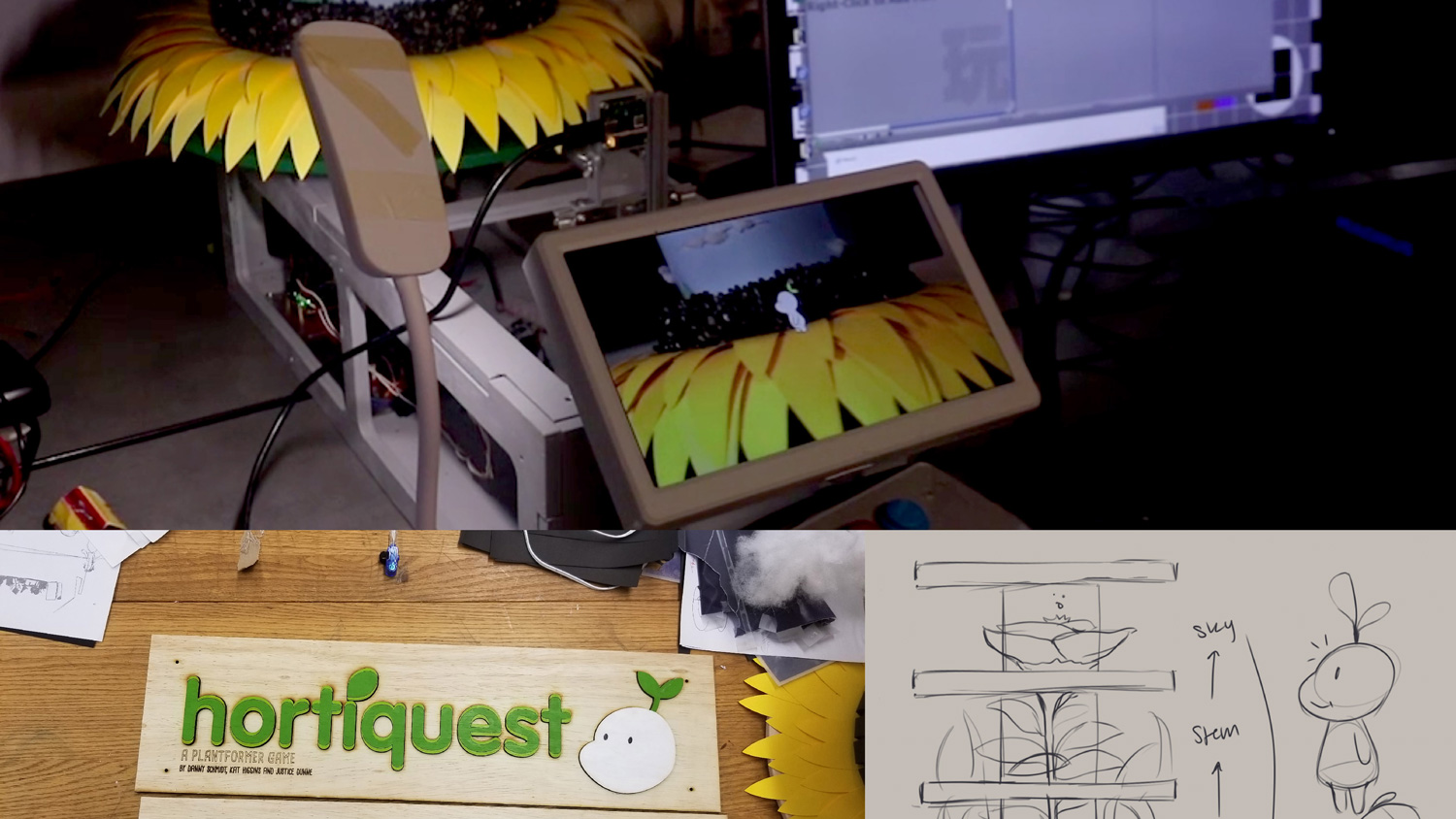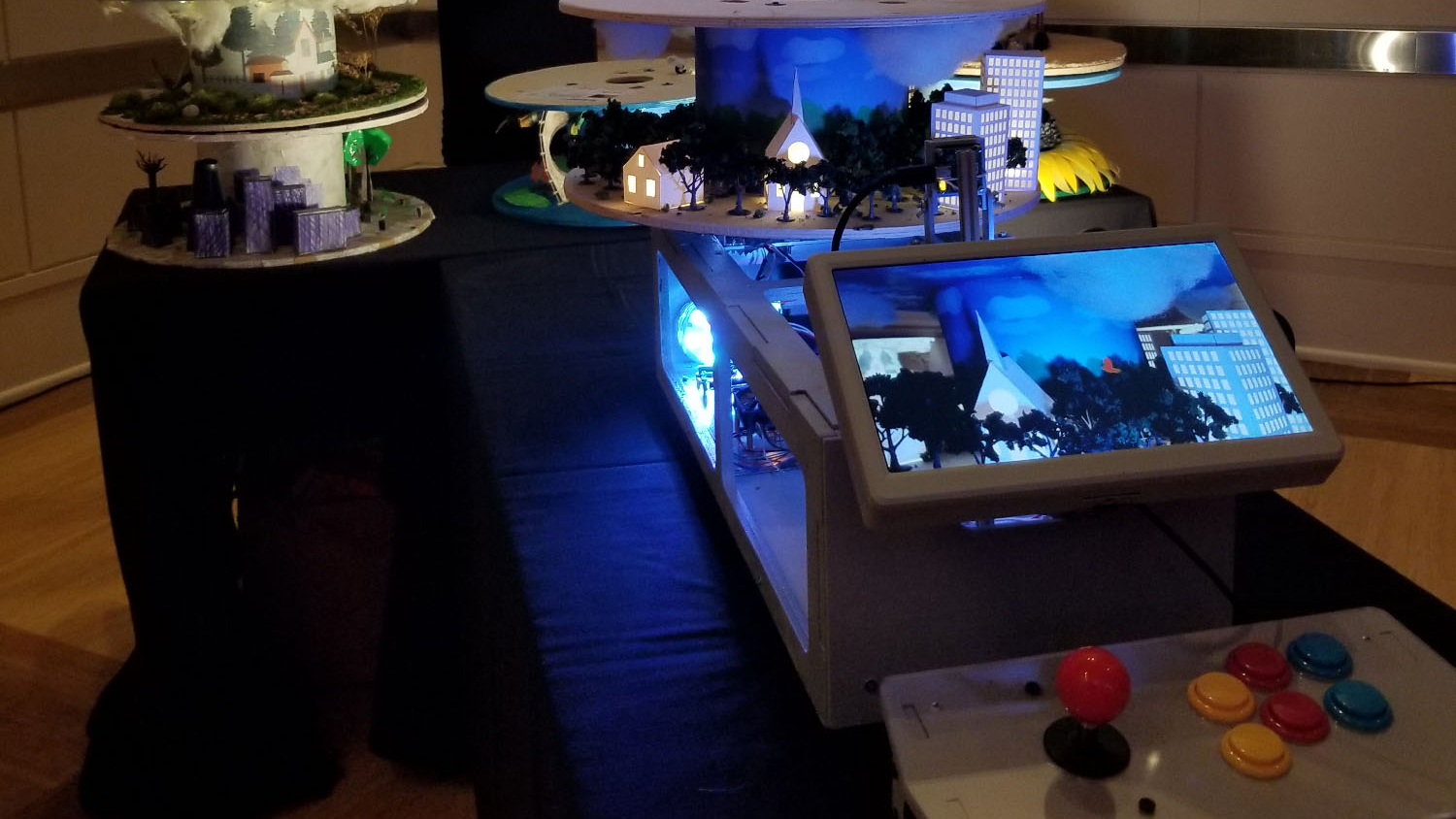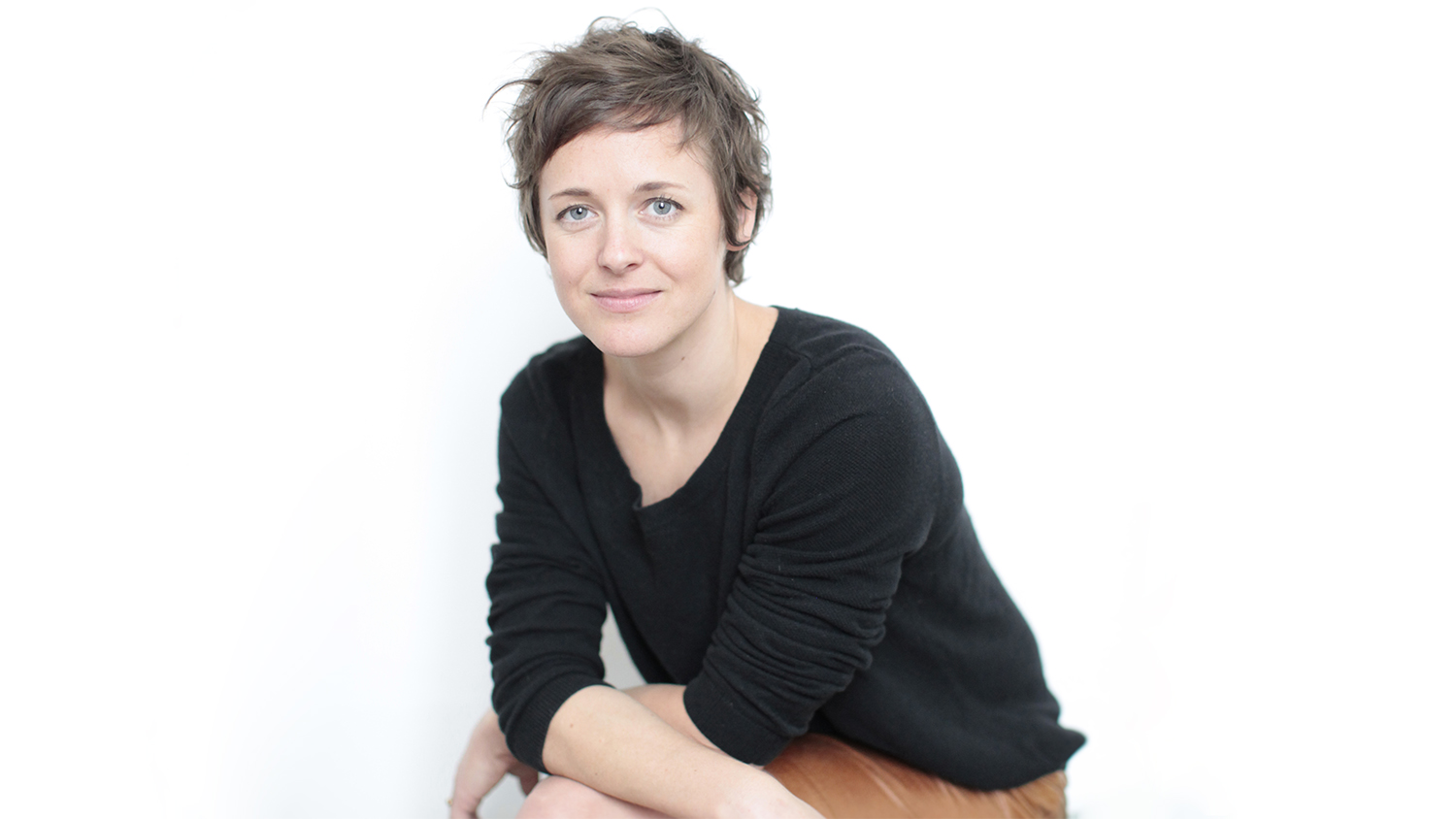Berreth, Fitzgerald and Polyak to Present at Prestigious SIGGRAPH 2020

It all started with some wooden spools. Brooks Hall was being rewired for internet, and a faculty member stumbled across 20 wooden spools lying in the breezeway between two buildings. That led faculty members Todd Berreth, Patrick Fitzgerald, and Emil Polyak to come up with a new project which was recently selected for inclusion in the 2020 SIGGRAPH conference in two categories.
“We liked the idea of very physical and handmade sets combining with cutting edge AR technology to develop the AR/Carousel, an idea we came up with over several brainstorming sessions” said Patrick Fitzgerald, associate professor of art + design who teaches courses in illustration, multimedia and animation.
The faculty embarked upon a project called Story-Go-Round: A Carousel-based Platform for AR Storytelling, which debuted in their shared design studio, ADN 460, Multimedia Project Studio. Student teams developed carousel-like stages out of the found spools which were linked to a game engine to control rotation using a motor and stream live camera feeds of the stage directly into a game environment, blending physical and virtual reality into a singular experience. Students of the studio were required to think creatively and problem-solve for unorthodox scenarios, to tell stories through interactive control and computer game play.


“The fun thing about this project was that we pitched a vision to students on the first day of class of what we wanted to do, and then built the technology over the course of the semester” said Todd Berreth, assistant professor of art + design and member of the NC State Visual Narrative Cluster. “The students were able to produce some really amazing, inspirational work both in their own project development, the concepts, and through the artistry and engineering involved, while the faculty actively brought our own research into the classroom, as we built a technology and education platform together.”
Based on the work that came out of the studio, Berreth, Fitzgerald and Polyak decided to submit the project for SIGGRAPH, the most prestigious computer graphics and animation conference in the world. “Acceptance rates are pretty low, so we were thrilled when we found out we would be participating in not one but two events” said Fitzgerald.
The first category is a general talk focusing on the work developed as a platform. Through the talk, Berreth, Fitzgerald and Polyak will present their work alongside other projects in a curated session based on a theme. The other category for which they were accepted is to Groovy Graphics Assignments, which is an education-focused venue to present innovative, creative and fun computer graphics assignments for use within computer science, game design, or art + design courses.
“Our particular project is well-suited for interdisciplinary design/development courses, which integrate students who have interests in art and design, computer science, basic electronics and digital fabrication” said Berreth. “I was happily surprised to be accepted, but felt good about our chances, especially for the Groovy Graphics program. This project was the definition of groovy – cool and funky, unorthodox and fun!”
Over the next two months, Berreth, Fitzgerald and Polyak will be preparing the submissions and talks for the conference, which will be virtual this year due to COVID-19. “There might be a few opportunities to have fun with the live online presentation…we’ll see” said Berreth. “It will be interesting to see how the SIGGRAPH community rises to the challenge within the event.”
The projects for inclusion in the conference are chosen by a jury, which is made up of industry leaders, including representatives from Pixar, Google, Walt Disney Imagineering, film studios, game companies, and more. The Department of Art + Design faculty teams have been accepted to this conference in three of the last six years of submission, which is a testament to the range of skills of the faculty and their ability to work together on projects that leverage a wide range of illustration, animation, and 3D making techniques, as well as software development and engineering.
- Categories:


